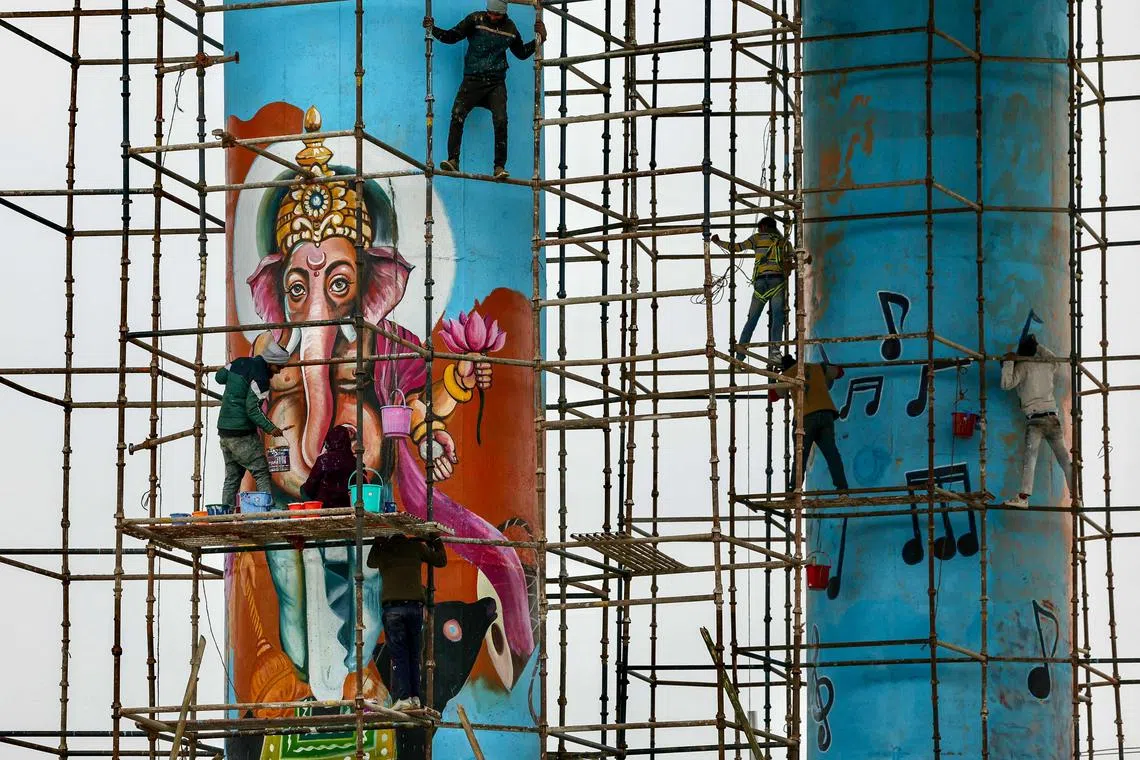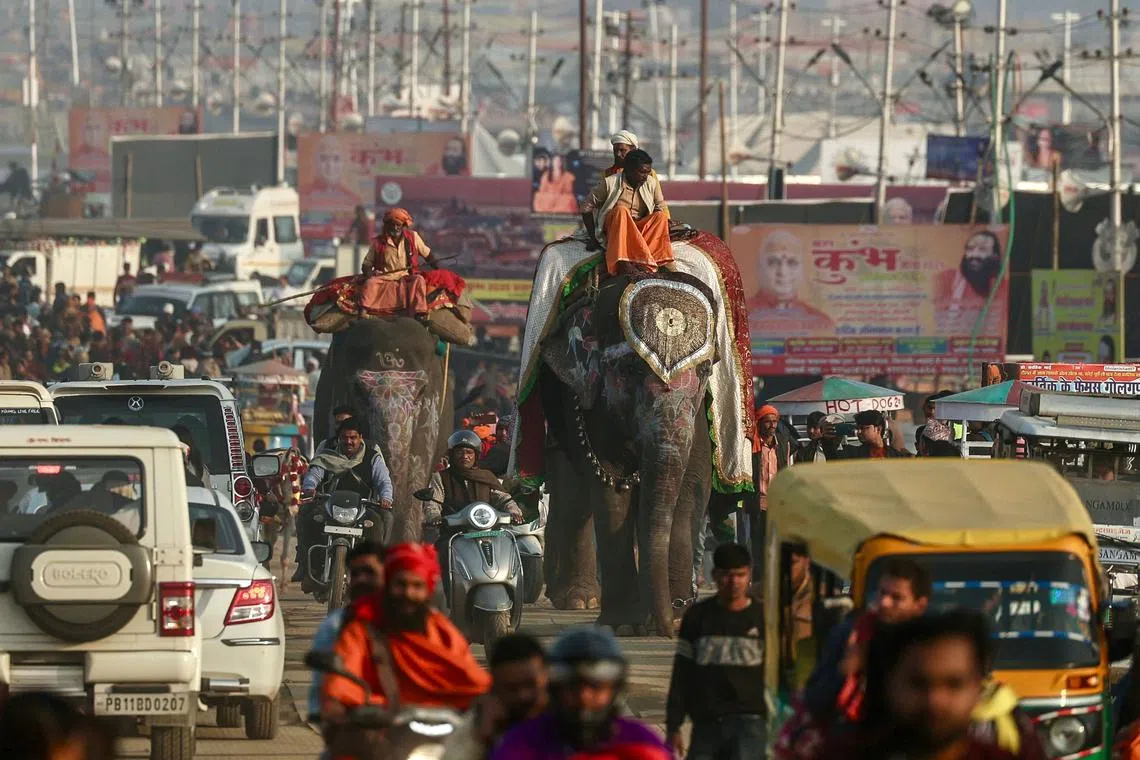India’s Maha Kumbh Mela: A look at the gigantic pitcher festival
Sign up now: Get insights on Asia's fast-moving developments

Workers painting a mural of Hindu deity Ganesha on a pillar, ahead of the Maha Kumbh Mela festival in Prayagraj, on Dec 31, 2024.
PHOTO: AFP
Follow topic:
NEW DELHI – The Maha Kumbh Mela, or Great Pitcher Festival, will bring more than 400 million people to Prayagraj city in northern India over a period of six weeks starting on Jan 13, making it the largest gathering of humanity in the world.
What is it?
The Kumbh Mela is held every three years in four cities on the banks of sacred rivers across India. The one held once every 12 years in this cycle has the prefix “maha” (great) as it is considered more auspicious due to its timing and draws the largest gathering.
Devout Hindus believe taking a dip in the sacred rivers absolves people of sins, and during the Kumbh Mela, it also brings salvation from the cycle of life and death.
How it started
The Kumbh Mela traces its origins to the Hindu text Rigveda and the word kumbh refers to a pitcher containing the elixir of immortality, which emerged during a divine event called the Sagar Manthan or churning of the cosmic ocean.
A celestial battle over this elixir took place over 12 divine days, equivalent to 12 human years. Drops of the nectar fell at four places – Prayagraj, Haridwar, Nashik and Ujjain – which became the venues of the Kumbh.
At the Kumbhs, devotees belonging to different Hindu sects, or Akharas, take part in grand processions and the Shahi Snaan or royal bath when they take a dip in the sacred river.
The grand spectacle attracts millions of visitors who come not just to partake in the ritual, but also to see thousands of saints and hermits, often clad in their traditional saffron attire, take a dip in near-freezing temperatures.
Who will attend?
Officials in Prayagraj, formerly known as Allahabad, are expecting more than 400 million people to swarm the large, temporary city created at the point where the Ganga and Yamuna rivers meet the Saraswati, a mythical, invisible river.
Attendees include saints, or sadhus, who follow a strict path of spiritual discipline and hermits who leave their secluded lives and visit civilisation only during the Kumbh Mela.
The fascination with the Kumbh is not limited to India alone. In the past, celebrities such as actor Richard Gere, movie director David Lynch and Tibetan Buddhist leader Dalai Lama have attended the event.
In 2017, the Kumbh Mela was included in Unesco’s list of the Intangible Cultural Heritage of Humanity.

Mahouts riding elephants as they leave after a religious procession ahead of the Maha Kumbh Mela festival in Prayagraj on Jan 11.
PHOTO: AFP
How is it being organised?
Given its gigantic size, organising the Maha Kumbh Mela is a mammoth task for the authorities, one that gets bigger every time. In contrast, about 1.8 million pilgrims attended the Haj pilgrimage in Saudi Arabia in 2024.
The authorities have set up 150,000 tents to accommodate the pilgrims, whose number is expected to be around three times the population of Russia.
The authorities also have a target to provide 450,000 new electricity connections, with more than half of these already allotted.
Around 5,000 workers are involved as the Kumbh is expected to consume power worth nearly 300 million rupees (S$4.7 million) – more than what 100,000 urban apartments in the region drain in a month on average.
Additional toilets have been set up and sanitation facilities enhanced to provide better infrastructure.
Drones and surveillance cameras are being deployed to ensure the safety of visitors. Stampedes have been a common occurrence at the Maha Kumbh in the past, with 36 pilgrims killed in 2013. REUTERS

